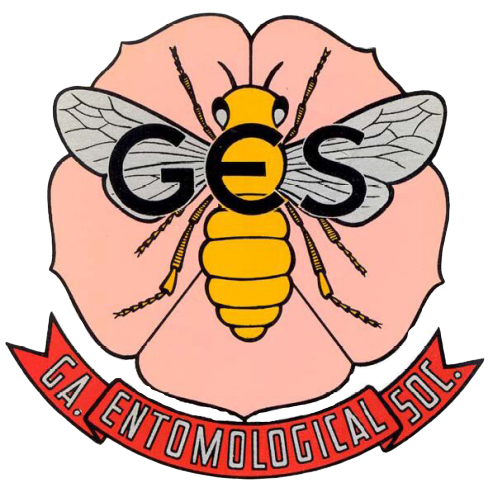Parental Care Exhibited by the Centipede Scolopocryptops melanostoma (Scolopendromorpha: Scolopocryptopidae) in Mexico
In terrestrial arthropods, parental care is generally defined as all forms of parental behavior traits that enhance offspring fitness (Smiseth et al. 2012, Pp. 1–17, The evolution of parental care, Oxford Univ. Press, Oxford; Trumbo 2012, Pp. 81–100, The evolution of parental care, Oxford Univ. Press, Oxford). Female-only parental behavior serves to protect the offspring and increase their fitness by neutralizing specific hazards that might threaten survival or growth, including predators, cannibalistic conspecifics, parasites, pathogens, and desiccation (Mitić et al. 2017, Trop. Nat. Hist., Suppl. 5: 38). In scolopendromorph centipedes, the females remain curled around the brood and a mass of juveniles with the terga positioned outwards (Lewis 1981, The biology of centipedes, Cambridge Univ. Press, Cambridge; Bonato and Minelli 2002, Zool. Anz. 241: 193–198; Siriwut et al. 2014, Raffles Bull. Zool. 62: 339–351). In the case of the genus Scolopocryptops Newport, this behavior has been reported only in S. ferrugineus (L.), S. sexspinosus (Say), and S. gracilis Wood (Auerbach 1951, Ecol. Monogr. 21: 97–124; Bücherl 1971, Pp. 169–196, Venomous animals and their venoms, Vol. III: Venomous invertebrates, Academic Press, New York; Lewis 1981; Westkamper 2015, Humbug: Good mothers, North Coast J. Polit. People Art, https://www.northcoastjournal.com/NewsBlog/archives/2015/09/06/humbug-good-mothers).
For some localities in the midwestern and southeastern United States, Auerbach (1951) recorded S. sexspinosus specimens with eggs and juveniles (brood size from 35 to 45) from June to August. He also observed that the mother remains with the eggs until they hatch and with the young until they can fend for themselves. In this note we report for the first time, to our knowledge, parental care in S. melanostoma Newport from Mexico.
Scolopocryptops melanostoma is a blind scolopocryptopid centipede with 23 pairs of legs, tooth plates strongly chitinized and without teeth, and ventral spinose process of prefemur of ultimate legs long (Attems 1930, Tierreich 54: 1–308; Chagas 2003, Revisão das espécies neotropicais de Scolopocryptopinae [Chilopoda: Scolopendromorpha: Scolopocryptopidae], MS Thesis, Univ. Fed. Rio de Janeiro, Brazil; Chagas 2010, Int. J. Myriap. 3: 159–168). It is widely distributed throughout Mexico, the Greater and Lesser Antilles, Central and South America, Australasia, Indochina, Taiwan, Philippines, east Indonesia, and Papua New Guinea (Chagas 2010; Schileyko and Stoev 2016, Zootaxa 4147: 247–280).
On 27 September 2018, during a field expedition at the Estación de Biología Tropical Los Tuxtlas (Instituto de Biología, Universidad Nacional Autónoma de México) in southern Veracruz, Mexico, we observed below the cortex of a decaying log, an adult female S. melanostoma curled around a mass of juveniles (at least 20 specimens). The centipede mainly used the walking legs of the last half of the body to cover the juveniles. The brood of juveniles adopted a ball shape, even when abandoned by their mother.
The mother abandoned the brood when we tried to collect it. Nonetheless, the female remained near the juveniles and tried to return to them. After this, the brood dispersed and only two juveniles were collected. Disturbing a brooding female can cause the abandonment of the eggs or even their consumption (Auerbach 1951; Minelli 2011, Pp. 279–294, Treatise on zoology—anatomy, taxonomy, biology: The Myriapoda, Vol. I, Brill, Leiden, Netherlands).
The specimens were identified using Attems (1930) and Chagas (2003, 2010); specimens were deposited in the Colección Entomológica del Centro de Estudios en Zoología del Centro Universitario de Ciencias Biológicas y Agropecuarias de la Universidad de Guadalajara, Zapopan, Jalisco, Mexico. The sex of the adult was determined according to Shelley (2002, Va. Mus. Nat. Hist. 5: 1–108), who suggests that, in some Scolopocryptops species, the density of the pilosity on the last three or four podomeres of the terminal legs represents sexual dimorphism, with females being sparsely hirsute and males possessing dense clusters of setae in a “bottlebrush” arrangement.
The length of the body of the adult female and the two juveniles was 33 mm, 6.4 mm, and 5.8 mm, respectively. The specimens are small, especially when compared with previous length records of 35–79 mm in adults (Chagas 2003) and 8 mm in juveniles (Auerbach 1951). On the other hand, unlike in temperate regions where brooding takes place during the summer (Minelli 2011), in Los Tuxtlas it was observed in early autumn (September); however, we need more studies to establish the periodicity of this behavior.
Contributor Notes
